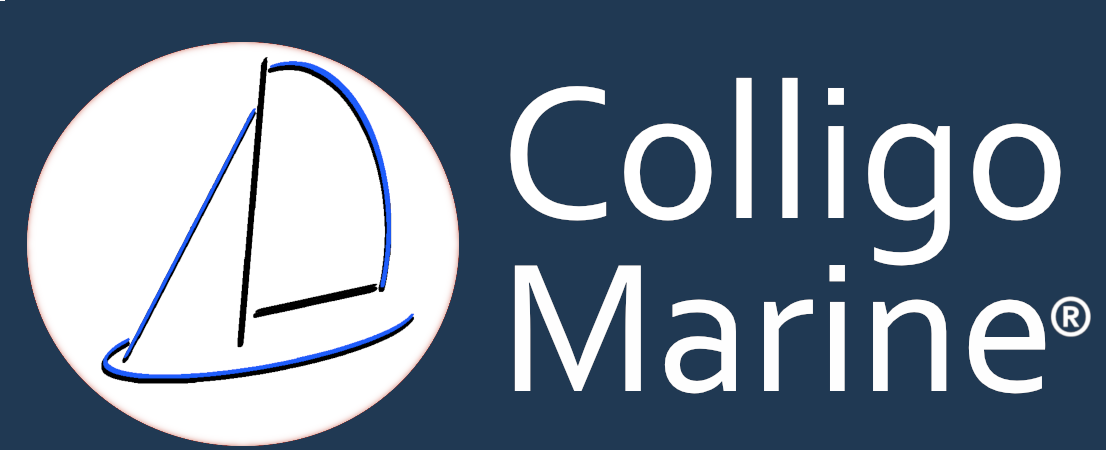
Colligo Support
Colligo Dux FAQ
-
Colligo Dux is factory stretched at elevated temperatures, this does 2 things:
1. It work hardens (opposite of annealing) the line making it stronger and much
more chafe resistant.
2. It virtually eliminates the constructional stretch that we would see with the
loads generated on a sailboat. Leaving only the material stretch of Dyneema
SK-75 to deal with.
The material stretch of Dyneema line is similar to 1x19 304 wire rope, for a given
diameter. That is, 7 mm Colligo Dux stretches slightly less than ¼” (6.4mm) 1x19
304 stainless wire rope. 9 mm Colligo Dux stretches slightly less than 5/16” (8mm)
1x19, 304 stainless wire rope. Colligo Dux will stretch considerably less than 316
stainless 1x19 wire rope, in similar diameters. There are stretch tables on our
website that we use for sizing Colligo Dux. -
Invariably, what we have seen here is that people will splice the line and then put it
directly into use. As the line is loaded the upset braid in the splice will continue to
stretch out and reset. This results in elongation of the line which can be mislabeled
as Creep or even stretch. Once the line has been stretched to its peak load, the
elongation will stop. This is why we pre-stretch all of our standing rigging systems, to reset the braid after splicing.
Colligo Dux will creep but the loads need to be substantial and constant. We size the line for creep based on the experimentally determined creep tables that we have and the constant loads the line will see, not the dynamic loads. Some of this data can be seen on our website. It is very easy to size the line such that you will see a minimum of creep. 9 mm dux with a constant load of 1200 lbs on it (substantially higher than the pretension on most sailboats) will creep about 0.1 inches (2.5 mm) per year. -
Colligo Dux UHMWPE line is a different material than steel and needs to be treated
as such. It needs to be sized for stretch and creep. If this is done correctly it will perform the same or better than steel systems with much less weight. In addition,the extra breaking strength offers a better factor of safety. In most cases the line
can chafe ½ way thru and still be stronger than the steel it replaces. -
Dyneema SK-75 fiber is the base fiber for Colligo Dux. SK-75 is used for butchers
protective gloves, loggers are dragging logs thru the woods with it instead of chain.
Colligo Dux is even tougher. It certainly is not steel but it is the toughest synethetic
line available. The hardest part about splicing this line is cutting it. Many sailors
are using Colligo Dux for forestays with Bronze Hanks. -
Yes, you can use conventional turnbuckles for tensioning. We can now splice and
pre-stretch any length to within 5/16 of an inch. If a more precise method of
tensioning is needed, than turnbuckles are the way to go. In addition, we have
designed the line terminators to fit certain production turnbuckles.
Lashings do have their place though. Literally, all of the sailors that have
purchased from us that were skeptical about using lashings have become
comfortable with them after using them. The weight advantages over turnbuckles,
along with the cost of replacing turnbuckles, make lashings more attractive. -
The base fiber for Colligo Dux is Dyneema SK-75. It is widely known as the best
synthetic fiber for UV resistance. Having said that, we like to work with real
numbers, so we are doing an ongoing UV study on our boat in Western Mexico
(where it rains about 3 days a year).
In addition, a study was completed by the University of Auckland several years ago
that showed some initial UV damage occurs externally, causing the outer layers to
become relatively opaque to UV, and then the rate of damage decreased.
With the data we have today, we can easily predict a life of 5 years or more for UV
exposure. This compares to an 8 year recommended replacement interval for steel.
We also believe, as new data comes in, that the life expectancy will go up.
